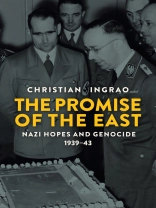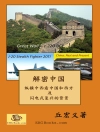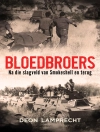How did the Nazis imagine their victory and the subsequent 'Thousand-Year Reich’?
Between 1939 and 1943, the Nazi imperial Utopia started to take shape in the conquered areas of Eastern Europe, brutally emptied of their inhabitants, who were displaced, reduced to slavery and, in the case of the Jews and a considerable number of Slavs, murdered. This Utopia had its engineers, its agencies and its pioneers (no fewer than 27, 000 Germans, most of them young). It aroused fervent support. In the Thousand-Year Reich, with its borders extended by conquest, a racially pure community would soon live a life of peace and prosperity, in total harmony.
In this book, renowned historian Christian Ingrao draws on extensive archival material to shed new light on this movement and explain how it could prove so appealing, examining the coherence and the inner contradictions of the activities undertaken by the different institutions, the careers of the women and men who played a part in them, and the ambitious plans that were drawn up. Ingrao adopts a social anthropological point of view to investigate the emotions aroused by the Nazi dream, and describes not just the hatred and the anxieties it fed on but also the joys and expectations it created – two sides of a single reality. As we learn from the terrible violence unleashed across the region of Zamosc, on the border between Poland and Ukraine, the hopes of the Nazis became a nightmare for the native populations.
This important work reveals an aspect of Nazism that is often overlooked and greatly extends our understanding of the general framework in which the Holocaust was realized. It will find a wide audience among students and scholars of modern German history and among a broad general readership.
Spis treści
* List of Maps
* Acknowledgments
* Synoptic table of plans for Germanization, displacements of population, and construction
* Introduction
* Prologue: The moment of Utopia (September 1939 – summer 1943)
* The mist-enshrouded time of foundations (1 September – 30 November 1939)
* The round of short-term plans (1 December 1939 – 21 June 1941)
* New horizons: the General Plan for the East (22 June 1941-15 February 1943)
* Part I: The men and the institutions of Utopia
* Chapter One: A nebula of institutions
* The diversity of the institutions of Utopia
* The central institutions: RKFd V, RSHA, WVHA
* The regional and local extensions of the SS: HSSPF and SSPF
* Local agencies and institutions: EWZ and UWZ
* Civilian administrations of incorporated and occupied territories
* How consensus was generated
* Forms and thoughts of the future in the East: the three main general plans
* The RSHA plans
* The WVHA memoranda
* Planning the RKFd V
* Chapter Two: Networks and trajectories of the men of the East
* 'Men’ of the East? A world in itself
* Professional networks and military networks
* Towards genocide? The itineraries of the experts
* Chapter Three: Osteinsatz. The journey to the East, a form of Nazi fervour
* The East, between utopia and anxiety
* The myths of the Great Trek
* The racial, hygienic and educational dimensions
* Conclusion
* Part II: Times and spaces of Utopia
* Chapter Four: General planning for the East
* The curse of Germanic insularity lifted
* Umvolkung: dissimilation or ethnomorphosis?
* The drying up of the alien ocean. Mass murder and utopia
* Chapter Five: At the School of Fine Arts
* Thinking about space
* City, Volksgemeinschaft and segregation
* Dreaming of rural space: the architect, the SS and the peasant
* Chapter Six: From one plan to the next? The Kammler sequence
* On planning style: the WVHA, Hans Kammler and their estimates
* Achieving Utopia? The institutionalization and failure of building programmes
* From the future back to the present: Utopia evaporates
* Conclusion
* Part III: The case of Zamo
* Introduction
* Chapter Seven: The microcosms of radical policy: Zamojszczyzna
* The men, the space and the past of Zamojszczyzna
* Institutional microscosms
* The land of all Nazi radicalisms
* Chapter Eight: The politics of the laboratory
* Classifying, expelling, deporting. The social engineering at the basis of utopia
* Building. The Nazi attempt to shape the territory
* Building, installing, settling. At the heart of a new world
* Chapter Nine: The nightmare. From the ethnic domino effect to the flames of despair
* In the full sight of all. The extermination of the Jews, prior to Germanization
* A society martyred
* Wars of the entre-soi (’inter-self wars’), (1943-1945)
* Conclusion
* Notes
* Appendix 1: List of acronyms of the SS’s 'utopian’ institutions
* Appendix 2: Organizational chart of the SS institutions of Utopia
* Timeline
* Index
*
O autorze
Christian Ingrao is one of the leading experts on the history of Nazism. Currently a researcher at the Centre national de la recherche scientifique (CNRS), he was director of the Institut d’histoire du temps présent (IHTP) from 2008 to 2013. His previous books include Believe and Destroy: Intellectuals in the SS War Machine (Polity, 2013).












